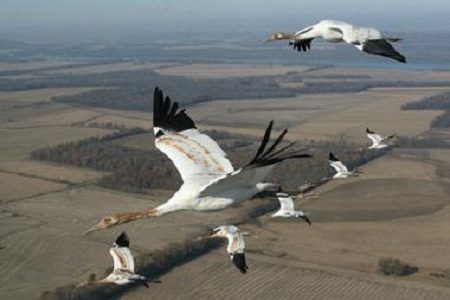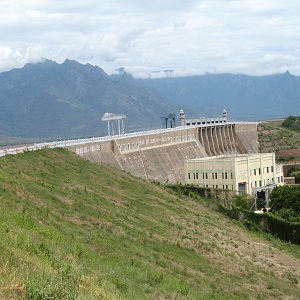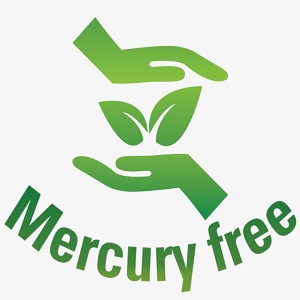Vulture Awareness Program at Anaikatty School
Date: September 22, 2012
Venue: Primary School, Anakatty Tribal Village, Nilgiri District
Organisers: Arulagam, Tamil Nadu Forest Department and District Education Department
Target group: Tribal primary school students and teachers
Purpose: To spread awareness about endangered vultures and threat to vulture populations because of Diclofenac drug.
Medium: Personal interaction and printed materials.
Funding / Collaboration: CEPF
Vulture Awareness Program at Ayyampalayam
Date: August 17, 2012
Venue: Ayyampalayam Village, Coimbatore
Organisers: Arulagam and NSS of Nirmala College for Women
Target group: Local villagers owning cattle, Students and Nature lovers
Purpose: To spread awareness about endangered vultures and threat to vulture populations because of Diclofenac drug.
Medium: Human chain rally, play acting, personal interaction and printed materials.
Funding / Collaboration: CEPF
Vulture Conservation Campaign at Masinagudi
Date: August 16, 2012
Venue: Masinagudi Village, Nilgiri District
Organisers: Arulagam, Tamil Nadu Forest Department and District Education Department
Target group: Local students and teachers and Nature lovers of Masinagudi
Purpose: To spread awareness about endangered vultures and threat to vulture populations because of Diclofenac drug.
Medium: Human chain rally, personal interaction and printed materials.
Funding / Collaboration: CEPF
Annotated List of Fishes Identified from the Bhavani-Moyar and Bhavani Sagar Riparian Ecosystem
S.No. |
Name of the Species |
Source of Information |
|||||
|---|---|---|---|---|---|---|---|
| Mukherji | Srinivasan & Ganesan | Rajan | Menon | Yazdani et al | CEPF Project | ||
| 1 | Amblypharyngodon melettinus | + | |||||
| 2 | Anguilla bengalensis* | + | + | + | |||
| 3 | Aorichthys aor | + | |||||
| 4 | Aorichthys seenghala | + | + | ||||
| 5 | Barbodes bovanicus | + | + | ||||
| 6 | Barbodes carnaticus | + | + | + | + | + | + |
| 7 | Barbodes jerdoni | + | + | + | |||
| 8 | Barbodes sarana | + | + | + | + | ||
| 9 | Barilius bendelisis | + | + | + | |||
| 10 | Barilius gatensis | + | + | + | + | + | |
| 11 | Catla catla | + | + | ||||
| 12 | Channa gachua | + | + | + | + | ||
| 13 | Channa marulius* | + | + | ||||
| 14 | Channa punctatus | + | + | ||||
| 15 | Channa striatus | + | |||||
Annotated List of Fishes Identified from the Bhavani-Moyar and Bhavani Sagar Riparian
Mukherji D D (1937) On a small collection of fish from the Bhavani river (S. India) BNHS35: 162-171 R Srinivasan and R Ganesan (1955) Contributions from the freshwater biological research station Bhavanisagar, Madras State No 1 Rajan, S (1955). Notes on a collection of fish from the headwaters of Bhavani river, south India. JBNHS 53: 44-48& Rajan, S (1963) Ecology of the fishes of rivers Pykara and Moyar (Nilgiris), S. India. Proc. Ind. Acad. Sci. 58 (B): 291-323 Menon, A G K (1999) Checklist –Freshwater Fishes of India, ZSI/Occasional Paper No 175 Yazdani, G M, Rema Devi, K, Raghunathan, M B and Singh, F D (2001) Fauna of Conservation Areas, Series 11: Fauna of Nilgiri Biosphere Reserve. Zoological Survey of India, pp207-224; this list is based on published information and 25 surveys in and around the Nilgiri Biosphere Reserve; only those specifically mentioned as Bhavani and/or Moyar Rivers are included. CEPF- Team: R J Ranjit Daniels, C Chenna Krishnan, N Muthu Karthick, K Ramasamy (Tracker), L Selvam (Fisherman), Kumar (Driver-cum-fisherman), Mahesh (Forest Guard), Das (Forest Watcher); Fish reported/seen during the field trip to Bhavani Sagar and Moyar River in February (8-11) 2011 and April (10-11) 2011
கடல் ஆமையின் கதை
ஆயிஷா டீச்சரின் வரவை ஆவலுடன் எதிர்பார்த்தபடி இருந்தனர் மாணவர்கள். வழக்கமான புன் முறுவலுடன் கலகலப்பாய் வகுப்பறைக்குள் நுழைந்தார். "இன்று ஆமைகளைப் பற்றி பேசுவோமா" என்று கேட்டு முடிக்கும் முன்பே "ஆமைல எத்தனை வகை டீச்சர்" என்று எதிர்கேள்வி கேட்டாள் இனிதா!
"தரைல இருத்தா நில ஆமை, ஆத்துலயோ, குளத்திலியோ இருந்தா நன்னீர் ஆமை, கடல்ல இருந்தா கடலாமை" என்று டீச்சரை முந்திக் கொண்டு பாலு பதில் சொன்னான்.
"சரியாச் சொன்ன பாலு!" என்று டீச்சர் உற்சாகப்படுத்தவும் பாலு முகத்தில் பூரிப்பு.
"இந்த மூணு வகைல எந்த வகையை மீனவ மக்களின் குழந்தைகள் அதிகம் இருந்தாலும் கடலாமைல இருந்தே ஆரம்பிக்கலாம் என டீச்சர் ஒத்துக்கொண்டார். "நம்ம கடல் பகுதியில் ஐந்து வகை ஆமை இருக்கு. அதுல நீங்க எதெல்லாம் பார்த்திருக்கீங்க?" என்றார் ஆயிஷா டீச்சர்.
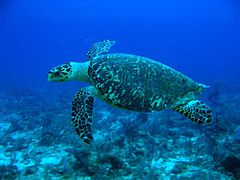
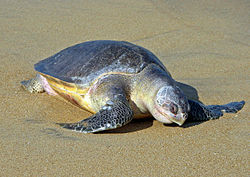 உடனே அமுதன் "டீச்சர் நேத்து நாங்க கடற்கரைல கபடி விளையாடும் போது ஆமை ஓடு கிடைச்சது. அப்புறமா அதைக் கொண்டுபோய் எங்க தாத்தா கிட்ட காண்பிச்சேன். அவரு இது அலுங்கு ஆமை ஓடுனு சொன்னாரு" என்று கூறியவாறே பையில் துளாவி அந்த ஓட்டை எடுத்துக் காண்பித்தார். அவ்வோடு பழுப்பு, செம்பழுப்பு, கருப்பு, வெளுப்பு என்று ஓவியம் போல இருந்தது. இதை மூக்குக் கண்ணாடி சட்டம், நகைப் பெட்டி செய்யுறதுக்கு வாங்கிட்டு போவார்கள் என்று தாத்தா சொன்ன தகவலையும் சேர்த்தே சொன்னான். "அருமையாய்ச் சொன்னாய் அமுதா" என்று சொல்லி விட்டு ஆங்கிலத்தில் Hawksbill Sea Turtle எனவும், அறிவியல் பெயராக Eretmochelys imbricalta எனவும் அழைக்கப்படும் இந்த ஆமை ஆடம்பர பொருட்கள் செய்வதற்காகவும் இறைச்சிக்காகவும் சகட்டு மேனிக்கு சாகடிக்கப்படுவதாகவும் கவலையுடன் ஆயிஷா டீச்சர் தெரிவித்தார்.
உடனே அமுதன் "டீச்சர் நேத்து நாங்க கடற்கரைல கபடி விளையாடும் போது ஆமை ஓடு கிடைச்சது. அப்புறமா அதைக் கொண்டுபோய் எங்க தாத்தா கிட்ட காண்பிச்சேன். அவரு இது அலுங்கு ஆமை ஓடுனு சொன்னாரு" என்று கூறியவாறே பையில் துளாவி அந்த ஓட்டை எடுத்துக் காண்பித்தார். அவ்வோடு பழுப்பு, செம்பழுப்பு, கருப்பு, வெளுப்பு என்று ஓவியம் போல இருந்தது. இதை மூக்குக் கண்ணாடி சட்டம், நகைப் பெட்டி செய்யுறதுக்கு வாங்கிட்டு போவார்கள் என்று தாத்தா சொன்ன தகவலையும் சேர்த்தே சொன்னான். "அருமையாய்ச் சொன்னாய் அமுதா" என்று சொல்லி விட்டு ஆங்கிலத்தில் Hawksbill Sea Turtle எனவும், அறிவியல் பெயராக Eretmochelys imbricalta எனவும் அழைக்கப்படும் இந்த ஆமை ஆடம்பர பொருட்கள் செய்வதற்காகவும் இறைச்சிக்காகவும் சகட்டு மேனிக்கு சாகடிக்கப்படுவதாகவும் கவலையுடன் ஆயிஷா டீச்சர் தெரிவித்தார்.
"சரி வேற ஆமை பேரு சொல்லுங்க" என்று டீச்சர் கேட்க "பஞ்சல் ஆமை" என்றாள் மஞ்சு. "திருநெல்வேலி மாவட்டத்தில் பெருமணல் என்கிற ஊருக்கு அருகில் உள்ள பஞ்சல் எனும் ஊரில் முட்டையிட்டு செல்வதால் இந்த பேரு வந்தது மற்ற கடலோர மாவட்டங்கள்ல இதைப் பங்குனி ஆமைனும் சொல்வாங்க. காரணம் பங்குனி மாதத்தில் தான் இவை குஞ்சு பொரித்து கடலில் சங்கமமாகும். ஆங்கிலத்தில் Olive Ridley Sea Turtle (ஆலிவ் ரிட்லினும்) அறிவியல்ல Lepidochelys olivacea னும் சொல்றாங்க" என டீச்சர் சொல்லி முடிக்கும் முன்பே "கிறிஸ்துமஸ் சமயத்துல பஞ்சல் ஆமை நம்ம கடற்கரைப் பக்கம் முட்டையிடுது டிச்சர். எங்க தாத்தா போன வருடம் நூற்றிப்பத்து முட்டைகளை வாளியில் போட்டு எடுத்து வந்தார். நாங்க அத ஆம்லெட் போட்டு சாப்பிட்டோமே" என்றான் பெஞ்சமின். "அட சாப்பாட்டு ராமா! இப்படி முட்டைய திண்ணிங்கண்ணா கடல்ல எப்படி ஆமை இருக்கும்" என்று வெகுண்டாள் ஓவியா. "ஆமாம் மாணவச் செல்வங்களே! ஆயிரம் முட்டைகளில் ஒன்றுதான் பெரிதாகும் வாய்ப்பு கிட்டுகிறது. ஏனையவை இயற்கை எதிரிகளாலும் மனிதத் தொந்தரவுகளாலும் அழிய நேரிடுகிறது."
"இன்னும் இதைப் பற்றி சுவாரசியமான தகவல் சொல்லவா?" என்று கோட்டார் டீச்சர். "இந்த ஆமை எந்த இடத்தில் பிறந்ததோ அந்த இடத்தைத் தேடி வந்து அதே கடற்கரையில் வந்து முட்டையிடும். முட்டை இடும்போது அழுமாமே டீச்சர்" எனறு கேட்டாள் எழிலரசி. "ஆம். தன் உடலில் அதிகபடியஅக சேர்ந்துள்ள உப்பை அகற்றுவதற்காகவும் குழி தோண்டும் போது கண்ணில் படும் மணலை வழிந்தோடச் செய்வதற்காகவும் இப்படி அழுகின்றன என ஆராய்ச்சியாளர்கள் தெரிவிக்கின்றனர்" என்று பதிலளித்த டிச்சர்.
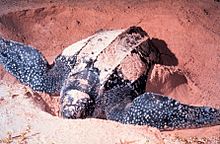 "சரி அடுத்து என்ன வகை ஆமை?" என்று கேட்க "எலி, ஆமை" என்றாள் தேன் மொழி. "பூனை ஆமை" என்றாள் செல்வி. "எனக்கு ஆமை வடைதான் டீச்சர் தெரியும்" என்றான் கபிலன்.
"சரி அடுத்து என்ன வகை ஆமை?" என்று கேட்க "எலி, ஆமை" என்றாள் தேன் மொழி. "பூனை ஆமை" என்றாள் செல்வி. "எனக்கு ஆமை வடைதான் டீச்சர் தெரியும்" என்றான் கபிலன்.
"பூனை ஆமையெல்லாம் இல்லை. எலி ஆமைதான் இருக்கு. இதோட உடம்புல ஓடுக்கு பதிலா கடினமான தோலாலும், எலும்பாலும் உறுதியாய் மூடியிருக்கும். ஆங்கிலத்தில் Leatherback Sea Turtle னும் அறிவியலில் Dermochelys coriacea னும் அழைக்கப்படும் இவை இழுது மீன் எனப்படும், சொறி மீனை விரும்பி உண்ணும்" என்று பதில் அளித்த டீச்சர் "அடுத்து என்னவகை?" என்று கேட்க "ஓங்கில் ஆமை" என்றான் கரிகாலன். 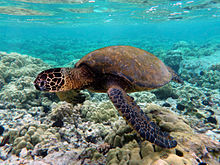 "ஆம். இதை ஆங்கிலத்தில் ஆங்கிலத்தில் Green Sea Turtle னும் அறிவியலில் Chelonia mydas னும் என அழைக்கின்றனர். இதை வைத்து இது பார்க்க பச்சை வண்ணமாய் இருக்கும் என்று கருதிவிடக் கூடாது. இதனுடைய ஊன் கொழுப்பு பச்சை வண்ணமாய் இருக்கும். சரி இன்னொரு வகை என்ன?" என்று கேட்டு முடித்தார். வகுப்பே அமைதியாய் இருந்தது. "பெருந்தலை ஆமை" என்ரு சன்னமாக கடைசி பெஞ்சிலிருந்து குரல் வந்தது.
"ஆம். இதை ஆங்கிலத்தில் ஆங்கிலத்தில் Green Sea Turtle னும் அறிவியலில் Chelonia mydas னும் என அழைக்கின்றனர். இதை வைத்து இது பார்க்க பச்சை வண்ணமாய் இருக்கும் என்று கருதிவிடக் கூடாது. இதனுடைய ஊன் கொழுப்பு பச்சை வண்ணமாய் இருக்கும். சரி இன்னொரு வகை என்ன?" என்று கேட்டு முடித்தார். வகுப்பே அமைதியாய் இருந்தது. "பெருந்தலை ஆமை" என்ரு சன்னமாக கடைசி பெஞ்சிலிருந்து குரல் வந்தது.
"யாரது அன்பரசனா? பெருந்தலை ஆமை என்று சொன்னது சரியாகத்தான் சொன்னே" என்று பாராட்டினார். டீச்சர். "இந்த ஆமையின் தலை பெரியதாய் இருப்பதால ஆங்கிலத்தில் Loggerhead Sea Turtle னும் அறிவியலில் Caretta caretta னும் அழைக்கப்படுகிறது" என்றார்.
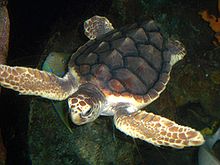 "ஆமை எத்தனை வருடம் உயிர்வாழும் டீச்சர்" என்று கேட்டான் பால்வண்ணன். "சுமார் முன்னூறு வருடங்கள் வரைகூட வாழும். இத்தனை வருடங்கள் வாழ இந்த ஆமை பல்வேறு வகை எதிரிகளிடமிருந்தும் குறிப்பாக மனிதர்களிடமிருந்தும் தப்பவேண்டி இருக்கும்!" என்று கூறினர் டீச்சர்.
"ஆமை எத்தனை வருடம் உயிர்வாழும் டீச்சர்" என்று கேட்டான் பால்வண்ணன். "சுமார் முன்னூறு வருடங்கள் வரைகூட வாழும். இத்தனை வருடங்கள் வாழ இந்த ஆமை பல்வேறு வகை எதிரிகளிடமிருந்தும் குறிப்பாக மனிதர்களிடமிருந்தும் தப்பவேண்டி இருக்கும்!" என்று கூறினர் டீச்சர்.
"நாம் வீதியில் விட்டெறியும் பிளாஸ்டிக்கை இழுது மீன் என நினைத்து விழுங்கி விடுவதால் இரைப்பையில் மாட்டி சாவைத் தழுவுகின்றன. இந்த ஆமையை உணவாகக் கொள்ளும் வேறோரு மீன் இதை உண்ணும்போது சங்கிலித் தொடர் போல அதையும் பாதிக்கிறது" என்றார் டீச்சர்.
"டீச்சர் பஞ்சல ஆமை நம்ம ஊரைத் தவிர வேற எங்கெல்லாம் முட்டையிட வரும்?" என்று கேட்டான் பூங்குன்றன். "ஆள் அரவமற்ற மனிதத் தொந்தரவற்ற கடற்கரைப் பகுதியைத் தேர்ந்தெடுத்து முட்டையிடும். நம் மாநிலத்தில் நாகப்பட்டினம், கோடியக்கரை உள்ளிட்ட பகுதியிலும், திருநெல்வேலி மாவட்டத்தில் இடிந்த கரை, விஜயதாழை, பெருமணல், பஞ்சல் உள்ளிட்ட பகுதிகளிலும் முட்டையிட வருகின்றன. தவிர இவை கூட்டம் கூட்டமாக வந்து முட்டையிடும் இடங்கள் உலகில் ஆறு உள்ளன. அதில் மூன்று இந்தியாவில் ஒரிசா மாநிலத்தில் உள்ள ககிர்மாதா, ருசிகுலா, தேவிஆறு முகத்துவாரம் ஆகும்.
இன்னும் ஒரு ஆச்சரியமான விசயத்தை சொல்லவா. முட்டையிடப்பட்ட இடத்திலுள்ள வெப்பநிலை 28 டிகிரி செலிசியசுக்கு அதிகமாக இருந்தால் அம்முட்டைகள் பெண் ஆமையாகவும், அதற்கு குறைவான் வெப்பநிலையில் ஆண் ஆமையாகவும் உருவெடுக்கின்றன" என்று டீச்சர் செல்லவும் "அப்படினா கோழி முட்டையிலும் இப்படி வெப்ப் நிலையை மாற்றினால் கோழியாகவும் சேவலாகவும் பிறக்குமா?" என் கண்ணன் கேட்கவும் அனைவரும் சிரித்தனர். "இதப்பத்தி நான் தெரிந்து கொண்டு இன்னொரு நாள் சொல்றேன் என டீச்சர் கூறினார்.
"கடல் ஆமைகளை பாதுகாக்க அரசும் முனைப்பு காட்டுது. ஆனால் அது மட்டுமே போதாது. சென்னையில பள்ளி கல்லூரி மாணவர்கள் சிலர் தன்னார்வமா ஆமை முட்டைகளை பொரிக்கிற வரைக்கும் பாதுகாப்பான இடத்தில் வைத்து குஞ்சுகளை கடலுக்குள்ள விடுறாங்க. இது போல மற்ற இடங்களிலும் செஞ்சா நல்லா இருக்கும்மில்ல" என்று ஒரு கேள்வியை முன்வைத்து டீச்சர் அன்றைய உரையாடலை முடிக்க ஆம் என அனைவரும் ஒரே குரலில் ஆமோதித்தனர்.
Developing Strategies to Establish Mercury Free Hospitals in Coimbatore
Period: 2010-11
Location: Coimbatore
Organisers: Arulagam, OSAI and District Administration
Target Group: Hospitals of Coimbatore.
Purpose: Building awareness and Developing Strategies to Establish Mercury Free Hospitals in Coimbatore.
Funding / Collaboration: Toxics Link
All societies are faced with the challenge of providing quality healthcare at an affordable value. As the relationship between human health and environmental contamination or degradation has become increasingly clear, societies must now also consider this dimension. As it turns out, one of the most important steps health care providers can take is to minimize their own sector's impact on the environment and therefore on human health itself. Such considerations are increasingly coming into play in the selection of healthcare products, such as temperature or blood pressure measuring devices that contain the global pollutant, Mercury.
In Coimbatore, the health care sector is a key source of global mercury demand and emissions. Mercury is found in many health care devices, including thermometers, blood pressure cuffs, and esophageal dilators. It is present in fluorescent lamps and dental amalgam, as well as many chemicals and measurement devices used in health care laboratories. The health care sector emits mercury waste into the environment when any of these devices are spilled or broken. Health Care generated mercury waste enters the global environment via incineration, solid waste disposal or waste water.
In this regard, TOXIC LINK, a New Delhi-based environment activist group, OSAI, and ARULAGAM worked in collaboration with health care providers, government agencies, and non-governmental organizations to completely eradicate mercury usage at healthcare sectors. To eliminate mercury usage from the health care sector is not difficult if we act on the right way. The chief mercury contamination sources include instruments that contain mercury like Thermometer, Blood pressure cuffs and esophageal dilators. It is also found in Dental amalgam, cleaning agents and fixatives for laboratory work. While starting this project we came to know a bitter fact that many of the stakeholders who have been associated with mercury don't know the ill effects of it. Due to the accuracy those mercury thermometers provide, Doctors prefer it to the digital ones though they were well aware of its ill effects. By the year 2011, We have formed a core committee involving stakeholders, NGOs which is headed by the District collector.
The members are
- District Collector, Coimbatore
- Medical Superintendent, Coimbatore Medical College
- District Engineer, TNPCB
- Joint Director of Medical and Rural Health Services, Coimbatore
- President, IMA, Coimbatore
- Secretary, IMA, Coimbatore
- President, IMA – NHB
- Mr. S. Sudhakar, Teckno Therm Industries
- Dean, GKNM Hospital
- President, Kovai Medical College Hospital
- Mr. Arun Venkatraman, Toxics Link
- Mr. K. Kalidasan, OSAI
- Member from Arulagam
- Mr. Ravindran, RAAC
Activities towards eradication
- We have created awareness about the hazardous nature of mercury in healthcare sector among the stakeholders in Coimbatore city.
- We have been sensitizing the health care personals on the hazards of mercury through information containing pamphlets, audio and video.
- Ten Hospitals were considered as target hospitals and various awareness measures were given to selected representatives from those hospitals. We have taken the process of convincing the hospital management to procure and use mercury-free instruments.
Activities in creating awareness includes
- Providing manual about the facts of mercury to the representatives.
- Brochure containing key points was issued to the representatives.
- Knowledge about the alternative equipment available without mercury was shared and discussed.
- A brain storming session was held to evolve strategies to phase out mercury from health care sectors.
- Slides and videos depicting the effects of Mercury on Human and ways to handle mercury spills were screened and discussed with those participants.
- Success stories of other hospitals which obliged to change to Mercury free were publicised to the hospital management representatives.
Further, we organised meetings with the authorities of the ten leading hospitals. They assured to eliminate the mercury equipment from their hospitals step by step. We hope within a few months, 5 of that hospitals would completely eliminate the mercury equipment. We are continuing our efforts to all other hospitals.
News in Media
Hospitals asked to end use of mercury: pollution control board - The Hindu | Nov 22, 2010
http://www.thehindu.com/news/cities/Coimbatore/article905241.ece
City's private hospitals phasing out mercury use - The Hindu | Feb 14, 2011
http://www.thehindu.com/todays-paper/article1453446.ece
Call to phase out mercury from health sector - Times of India | Nov 22, 2010
http://articles.timesofindia.indiatimes.com/2010-11-22/chennai/28212875_1_health-sector-mercury-healthcare-sector
Coimbatore GH turns mercury-free, first outside Delhi - Times of India | Dec 11, 2010
http://articles.timesofindia.indiatimes.com/2010-12-11/chennai/28244981_1_mercury-20-acre-lake-dental-wing
Vulture Conservation Workshop at Bhavanisagar
Date: May 5, 2012
Venue: RIRD Training Center, Bhavanisagar
Organisers: Arulagam and Care Earth
Target group: Vulture Watchers, Students and Nature lovers
Purpose: To strengthen the capability of vulture watchers and to spread awareness about Diclofenac threat to Vultures.
Medium: Presentations, personal interaction and printed materials.
Fund / Collaboration : CEPF
Subcategories
Wildlife Article Count: 42
Vulture Conservation Article Count: 27
River Moyar Conservation Article Count: 6
Tiger Conservation Article Count: 3
Renewable Energy Article Count: 1
Petitions Article Count: 1
Publications Article Count: 1
Articles Article Count: 21
Community Article Count: 12
Nursery and Afforestation Article Count: 7
Coastal Conservation Article Count: 1
Page 11 of 13

